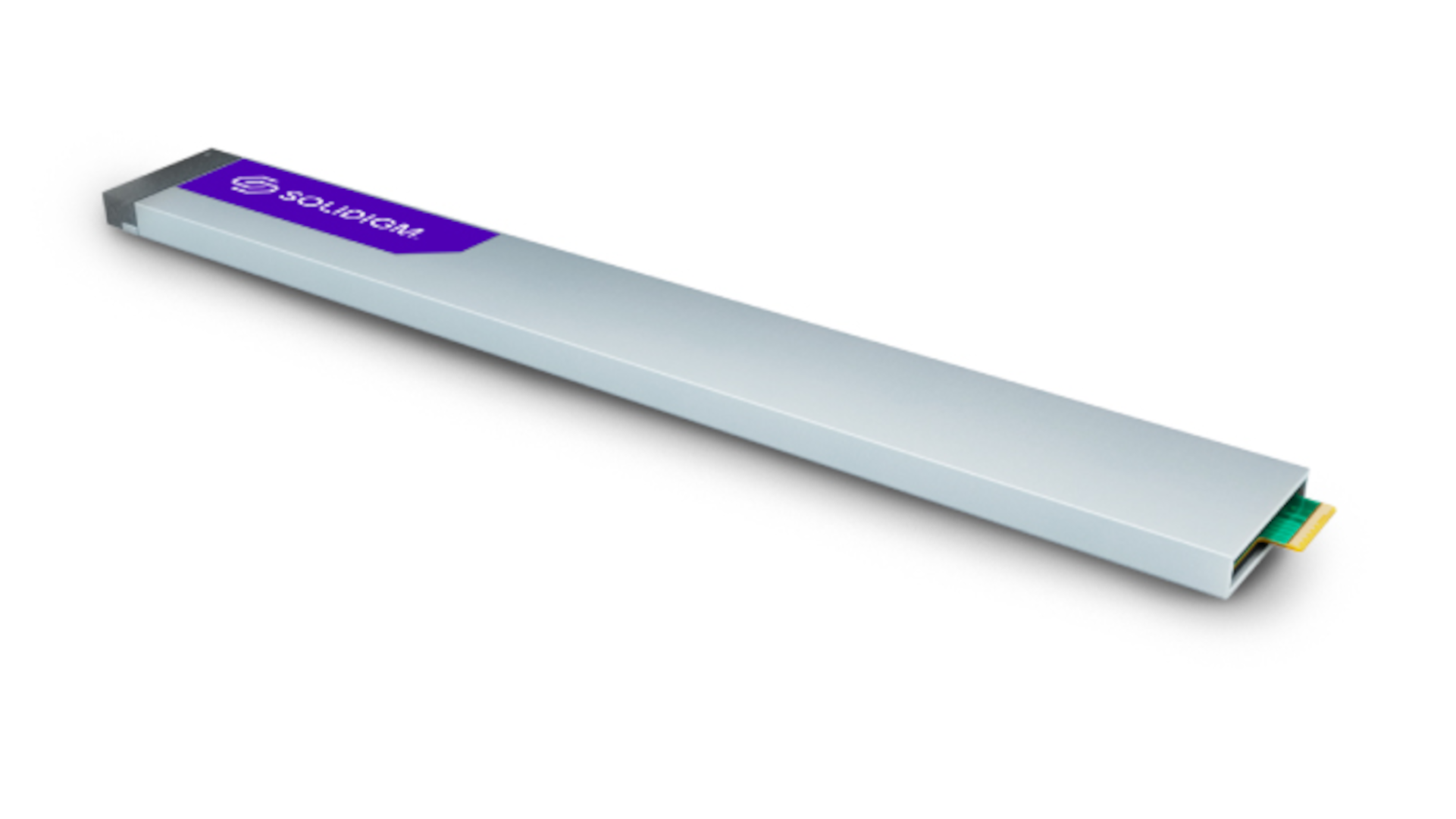World’s highest capacity PCIe SSD hits 61TB, and you could fit two in your PC
U.2 form factor means you can use it in a custom-built workstation PC

Solidigm has unveiled its D5-P5336, a PCIe 4.0 NVMe SSD with a capacity of 61.44TB, twice the size of the next largest PCIe SSD, 30.72TB, with a 16KB Indirection Unit, making it ideal for mixed-load read-intensive storage workloads and rightfully earning it a spot in our largest SSD leaderboard.
The D5-P5336 still lags behind the SAS/SATA-based 100TB NimbusData Exadrive, which turned five earlier this year, but still costs significantly more.
Solidigm’s latest product is only available in the E1L and U.2 formats, form factors that are popular in data centers but almost totally absent from the end user market (of course, you can build your own custom U.2-friendly workstation using off-the-shelf parts).
Bigger SSD coming soon
Doubling the top-end capacity of the SSD means that administrators will be able to fit a whopping two petabytes of storage in just 1U of rack space (or more than 40PB in a whole rack).
In the first half of 2024, an E3.S form factor will be available in capacities up to 30.72TB (but not 61.44TB).
The SSD uses 192-layer, QLC 3D NAND technology, has a claimed endurance of 0.58 DWPD (drive write per day) with a lifetime endurance of 65.2PBW (petabyte written) and a five-year warranty.
Are you a pro? Subscribe to our newsletter
Sign up to the TechRadar Pro newsletter to get all the top news, opinion, features and guidance your business needs to succeed!
Solidigm published numbers showing that the drive will reach sequential read/write speeds of up to 7,000MB/s and 3,300MB/s respectively. In one slide of the marketing presentation, the vendor went as far as claiming that Solidigm QLC matches TLC for most part.
How much the P5336 will cost remains a mystery. The Solidigm SSD D5-P5316, its predecessor also known as the Intel SSDPFWNV307TZ, currently sells for just over $2,000 at online retailer Wiredzone. I expect this 61.44TB drive to sell for less than $6,000, shattering the $100/TB floor which is about 200% more than the per-terabyte price of an entry level 4TB SATA SSD.
Many workstation motherboards have two U.2 ports, which means that for professionals with deep pockets could have a pair of 61.44TB P5336 running in their pedestal PCs as secondary storage drives (alongside much faster boot SSD drives).
Solidigm launched the first of what I expect to be a plethora of 50TB+ SSDs by the end of the year. Remember that the P5336 doesn’t use cutting edge QLC parts but more mature 192-layer components, which means that there’s still room to grow.
Expect Solidigm’s rivals (Micron, Samsung and Kioxia) to all release products with similar capacities soon - watch out for announcements and product demos at next month’s Flash Memory Summit (FMS) at the Santa Clara Convention Center.
Beyond that, PLC (penta-level cell) and 400-layer NAND chips could be what’s needed to breach the 100TB barrier in 2024/2025 with 122.88TB SSD drives the next big target on the horizon. Unless, of course, something else like DNA storage, Silica-based drives or some other storage technology goes mainstream before that point.

Désiré has been musing and writing about technology during a career spanning four decades. He dabbled in website builders and web hosting when DHTML and frames were in vogue and started narrating about the impact of technology on society just before the start of the Y2K hysteria at the turn of the last millennium.